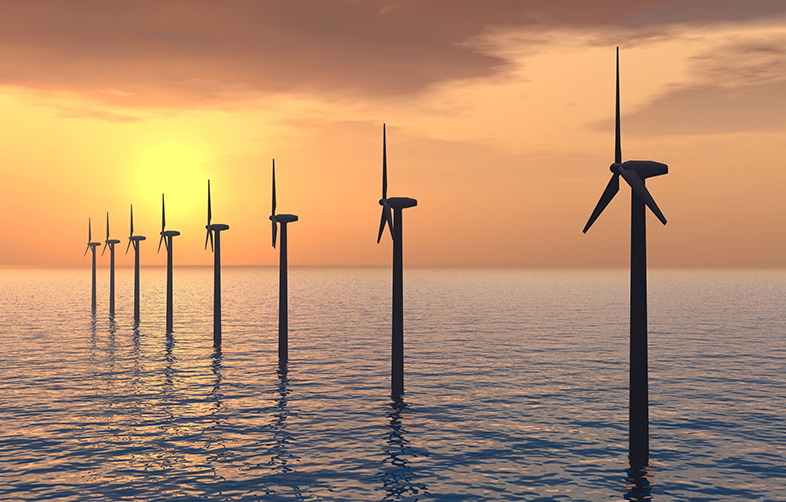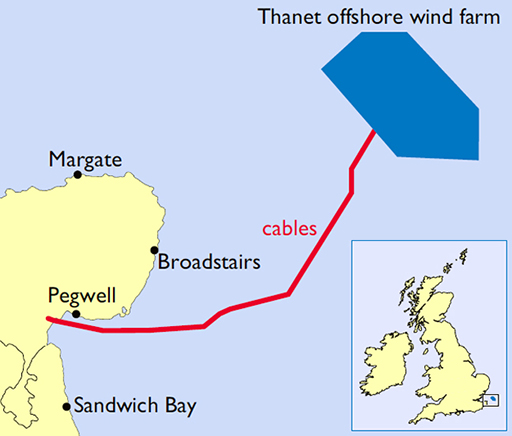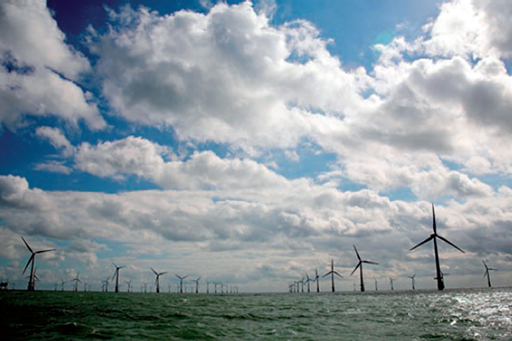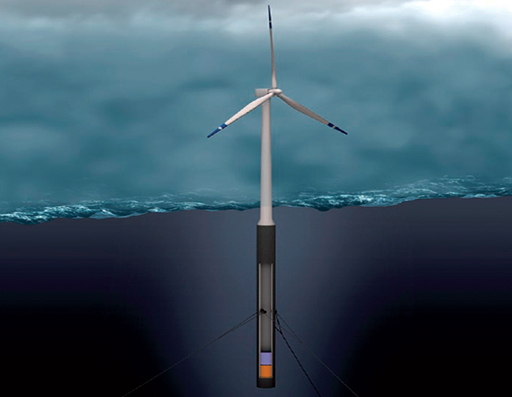8 Offshore wind energy
The capital costs of energy from offshore wind farms, such as the one shown in Box 2, are currently higher than those of onshore installations because of the extra costs of civil engineering for substructure, higher electrical connection costs and the higher specification materials needed to resist the corrosive marine environment.
Box 2: Thanet offshore wind farm
One of the world’s largest wind farms is in the estuary of the river Thames. It began operating in September 2010 at a site 12 km off Foreness Point in Kent. It forms the second wind farm in the Thames Estuary after the Kentish Flats Wind Farm.
The Thanet wind farm cost £780 million, took two years to construct and was completed in June 2010.
The project consists of 100 Vestas V90-3 turbines each rated at 3 MW, giving a total installed capacity of 300 MW.
The 90 metre diameter turbines are spaced 500m apart in one direction and 800m apart in the other, over an area of 35 km2, in a water depth of 20-25m. Each turbine has a hub height above sea level of approximately 70m. The wind farm is estimated to generate an electricity output equivalent to the consumption of more than 200,000 UK homes.
In general offshore wind speeds are higher and more consistent than on land. Test results from the Tunø Knob offshore wind farm in Denmark indicate that actual output is 20–30% higher than that estimated from wind speed prediction models. Availability was also higher than expected with an average of 98% being achieved. These characteristics, together with likely reductions in offshore costs as experience is gained, are expected to make offshore wind energy costs competitive in the medium to long term.
Very large-scale wind turbines can capture more energy from a single platform and this can have benefits in terms of reduced maintenance costs. Although the initial capital investment is higher, the falling price of wind energy in the UK has been dramatic. In September 2017, a competitive tender resulted in a price of £57.50 per MWh, far cheaper than the government-backed price of £92.50 awarded in 2016 to the Hinkley Point nuclear power station project (The Guardian, 2017).
The main driver for lower wind energy prices is the ever-increasing length of the turbine blades being manufactured. A turbine commissioned in 2002 swept a diameter of 80 m; in 2005, this increased to 90 m; in 2011 it was 120 m. as in Figure 21. By 2020, 180 m swept diameter is expected on new installations.
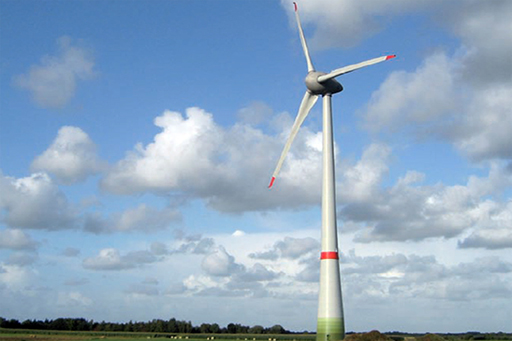
An interesting recent development involves floating offshore turbines, such as Norway’s Hywind, an innovative wind turbine, as in Figure 22, that has been successfully demonstrated in a water depth of 220 m. Floating wind turbines have significant implications for expanding the potential offshore wind energy beyond the shallow continental shelf sites so far developed. Development of the world’s first floating wind farm, 25 km offshore from Peterhead in Scotland, is aiming at generating 30MW starting in late 2017 (BBC News, 2017)
In late 2017, with 5,355 MW of offshore operational wind energy capacity installed from 1,500 offshore turbines, the UK has the world’s largest offshore wind energy capacity at the time of writing (RenewableUK, 2017.)
